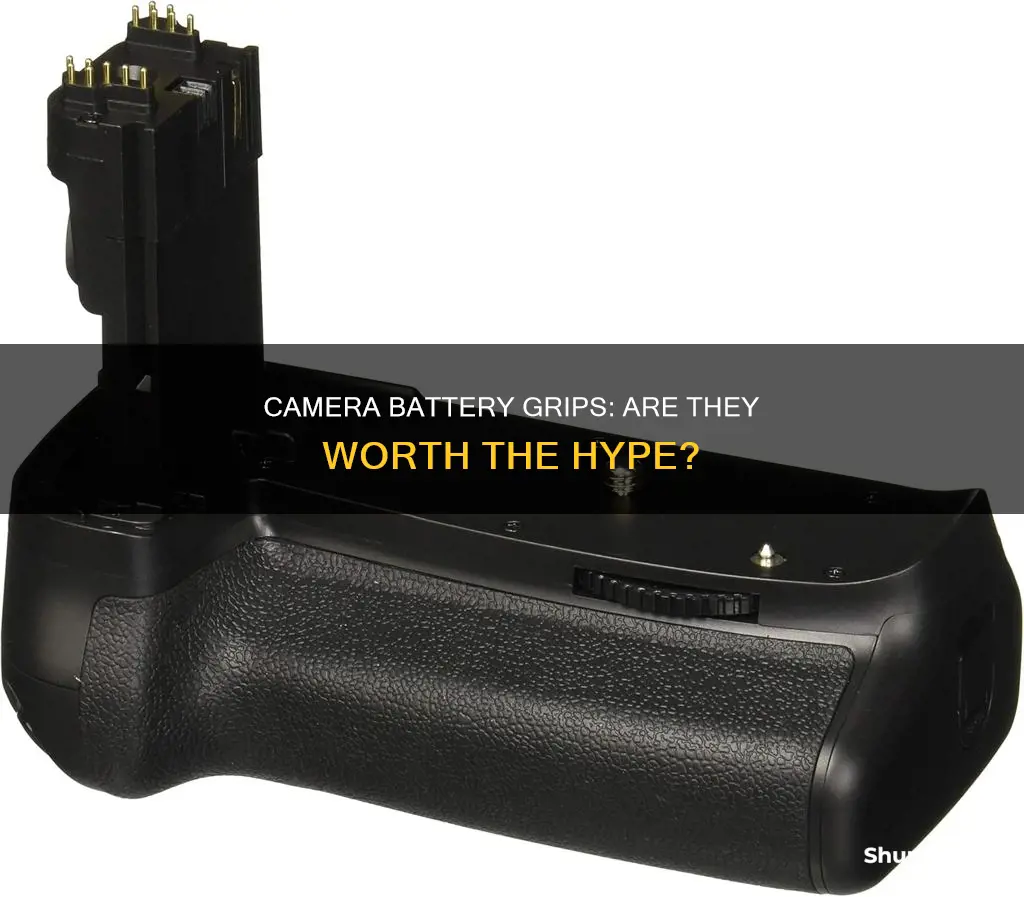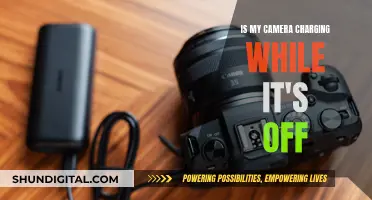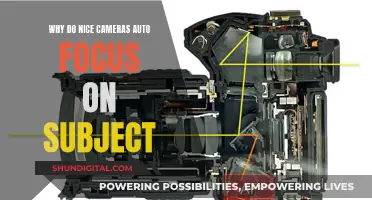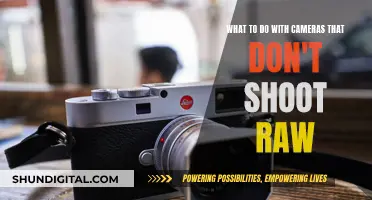
Camera battery grips are accessories that can be attached to your camera to improve its performance in many ways. They are especially useful for portrait photography as they come with additional shutter keys on the side, making it easier to take shots without reaching for the camera. They also help extend the battery life of the camera by providing space for another battery, which is beneficial if you take a lot of photos at once. Battery grips can also be useful for video recording as they help to reduce battery drain. They can be bulky and heavy, however, and may not be a good option if you want a lightweight camera.
| Characteristics | Values |
|---|---|
| Great for portrait photography | Additional shutter keys on the side allow for easier access to the shutter button when taking portrait shots. |
| Support for battery life | Doubles the power by providing space for another battery. |
| Ideal for video recording | Stops the battery from draining faster. |
| Enhances stability | The added bulk balances out larger lenses. |
| Low-temperature performance | Extends battery life in cold weather. |
| Comfortable in the upright position | Buttons and keys are set up to be used in both vertical and horizontal positions. |
| Intensify the frame rate | Raises the performance of the camera by receiving more power. |
| Size | Can be too big for people with small hands. |
| Bulky | Can be heavy and cumbersome, especially for beginners. |
| Cost | Can be expensive, ranging from $230 to $10,000. |

Portrait photography
If you're a portrait photographer, a battery grip can be a great accessory to have. It's not an essential piece of kit, but it can bring some benefits to your workflow.
The main advantage of a battery grip for portrait photography is the additional shutter button and control dials on the side, which make it much easier to shoot in portrait orientation. This means you don't have to crane your arm over to reach the standard shutter button and dials, and you'll have a much steadier grip on the camera.
A battery grip can also help to balance out larger lenses, such as telephoto lenses. The extra weight and bulk can make the camera feel more stable and comfortable to hold, especially if you have big hands. It also means the camera's centre of gravity is over your hand, which is better for your posture.
Another benefit is the extra battery life. A battery grip allows you to insert a second battery, which can be a lifesaver if you're shooting all day and don't want to worry about running out of power. Some grips can also take AA batteries, which are versatile and powerful for long-term use.
However, there are some downsides to using a battery grip. They add significant bulk and weight to your camera, which can be a problem if you prefer a lightweight setup or have small hands. They can also be quite expensive, ranging from $230 to $10,000 depending on the quality.
Overall, a battery grip can be a worthwhile investment for portrait photographers, but it's not essential. It really depends on your personal preferences and shooting style.
Charging the Kitmesh Camera: A Quick Guide
You may want to see also

Video recording
One user on Reddit noted that they do a lot of nightlife photography and have never run out of battery, even at events that go until 5 am. They also mention that they rarely shoot in portrait orientation, so a grip wouldn't be useful for them. However, another user commented that they do yearbook photos for around 5 hours a day and their back started to hurt quickly without a grip.
Another user on Reddit said that they do a lot of video recording and have never needed a grip, as they just put a spare battery in their pocket. They also mention that they've never shot in a club and thought, "hey, I could really use a battery grip."
A battery grip can be particularly useful if you're shooting video for long durations without the opportunity to change your batteries. It can also help balance out a heavy lens, making your camera steadier for video recording.
One source notes that a battery grip can be beneficial for time-lapse videos, as it ensures your video doesn't get stopped due to a lack of power.
So, depending on the type of video recording you're doing, a battery grip could be a worthwhile investment.
GoPro Charging Time: How Long Until Your Camera's Ready?
You may want to see also

Battery life
A major benefit of using a camera battery grip is the extended battery life it offers. This is achieved by providing space for an additional battery, essentially doubling the power supply. This feature is especially useful for photographers who take a lot of photos without checking the battery status or those who shoot in conditions that drain the battery faster, such as video recording or time-lapse photography.
Some battery grips also allow the use of AA batteries, which can be more versatile and powerful for long-term applications, even if they are not fully charged. This can be a cost-effective solution, reducing the need to invest in multiple rechargeable batteries.
For photographers who frequently shoot in portrait orientation, the additional shutter buttons on the grip can be a significant advantage. This feature eliminates the need to crane your arm to reach the normal buttons, resulting in a steadier grip and improved stability.
The added bulk of the grip can also enhance the balance of the camera, especially when using larger lenses. It provides a more comfortable and secure grip, making it easier to handle the weight of heavier lenses.
However, it's important to consider the drawbacks of using a battery grip. The increased size and weight can make the camera setup bulky and cumbersome, especially for beginners or those with smaller hands. It may not be the best option if you prefer a lightweight camera setup without any gear extensions.
Additionally, purchasing a high-quality battery grip can be expensive, ranging from $230 to $10,000. It's essential to weigh the benefits against the cost to determine if it aligns with your photography needs and skill level.
Testing Camera Battery Chargers: A Step-by-Step Guide
You may want to see also

Camera stability
A battery grip can be a great accessory for improving camera stability. Its additional bulk helps balance out heavier lenses, making it easier to hold the camera steady. This is especially noticeable with telephoto lenses. The grip also makes it easier to hold the camera in portrait orientation without needing to crane your arm over to reach the buttons, which can make it steadier.
The grip can also act as a mini-stand when shooting products or food, for example. Position it on a level surface and the lens will be elevated to a good shooting angle.
However, the added weight and bulk of a battery grip can be a downside for some users, especially beginners. It can make the camera harder to hold and less comfortable to carry around. For this reason, some photographers choose to remove the grip for everyday shooting or when travelling light.
The increased size of the camera with a grip attached can also make it harder to be discrete in some shooting environments, and may make it a target for theft.
Gaffer's Kit: Should You Include Camera Batteries?
You may want to see also

Ergonomics
A camera battery grip can significantly improve the handling of your camera, especially for those with larger hands. The grip makes it easier to hold the camera, as your palm can rest on the grip while your fingers have more space to grip and click the shutter button. This is especially useful for those who use larger lenses, as it helps to balance the weight of the camera and lens, making it more comfortable to hold for extended periods. The grip also makes it easier to shoot in portrait orientation, as it provides a more natural hand position and additional shutter buttons that are easier to reach. This can lead to a steadier grip and improved stability, which is particularly beneficial for long shoots or when using heavy lenses.
However, the added bulk and weight of a battery grip can be a downside for some users, especially those with smaller hands or those who prefer a lightweight camera setup. The extra size and weight can make the camera more cumbersome to carry and may not fit as easily in your camera bag. It may also take some time to get used to the additional buttons and controls on the grip, especially when changing settings on the fly.
Overall, a camera battery grip can provide improved ergonomics and handling for many photographers, especially those with larger hands or those using heavier lenses. However, it may not be ideal for those who prioritise a lightweight and compact camera setup.
Charging the Kodak Easyshare C1450: A Simple Guide
You may want to see also
Frequently asked questions
A camera battery grip has many benefits, including improved performance, ease of use, and extended battery life. It is great for portrait photography as it has additional shutter keys on the side, making it easier to reach the shutter button. It also makes the camera easier to hold, balances the weight of larger lenses, and is ideal for video recording as it stops the battery from draining faster.
Yes, there are a few downsides to using a camera battery grip. It can be bulky and heavy, especially for beginners, and it can be difficult to hold for people with small hands. It is also expensive, ranging from $230 to $10,000.
A camera battery grip is ideal for portrait photographers or anyone who shoots for long periods of time, such as events or sports. It is also useful for people with big hands as it makes the camera more comfortable to hold.
Yes, there are a few alternatives to a camera battery grip. You can use an L-plate, which improves the grip and ergonomics of the camera without adding as much bulk or weight. You can also carry spare batteries and switch them out when needed.







